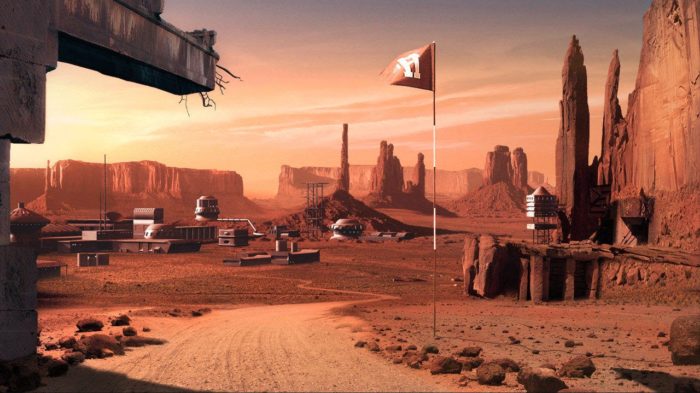Sep 26 2024
What Happened to the Atmosphere on Mars
 Of every world known to humans outside the Earth, Mars is likely the most habitable. We have not found any genuinely Earth-like exoplanets. They are almost sure to exist, but we just haven’t found any yet. The closest so far is Kepler 452-b, which is a super Earth, specifically 60% larger than Earth. It is potentially in the habitable zone, but we don’t know what the surface conditions are like. Within our own solar system, Mars is by far more habitable for humans than any other world.
Of every world known to humans outside the Earth, Mars is likely the most habitable. We have not found any genuinely Earth-like exoplanets. They are almost sure to exist, but we just haven’t found any yet. The closest so far is Kepler 452-b, which is a super Earth, specifically 60% larger than Earth. It is potentially in the habitable zone, but we don’t know what the surface conditions are like. Within our own solar system, Mars is by far more habitable for humans than any other world.
And still, that’s not very habitable. It’s surface gravity is 38% that of Earth, it has no global magnetic field to protect against radiation, and its surface temperature ranges from -225°F (-153°C) to 70°F (20°C), with a median temperature of -85°F (-65°C). But things might have been different, and they were in the past. Once upon a time Mars had a more substantial atmosphere – today its atmosphere is less than 1% as dense as Earth’s. That atmosphere was not breathable, but contained CO2 which warmed the planet allowing for there to be liquid water on the surface. A human could likely walk on the surface of Mars 3 billion years ago with just a face mask and oxygen tank. But then the atmosphere mostly went away, leaving Mars the dry barren world we see today. What happened?
It’s likely that the primary factor was the lack of a global magnetic field, like we have on Earth. Earth’ magnetic field is like a protective shield that protects the Earth from the solar wind, which is charged so the particles are mostly diverted away from the Earth or drawn to the magnetic poles. On Mars the solar wind did not encounter a magnetic field, and it slowly stripped away the atmosphere on Mars. If we were somehow able to reconstitute a thick atmosphere on Mars, it too would slowly be stripped away, although that would take thousands of years to be significant, and perhaps millions of years in total.
But this may not have been the only process at work. A recent study models the chemistry at the surface of Mars to see if perhaps the abundant CO2 in the early Mars atmosphere might still be there. What the model shows, based on known chemical reactions on Earth, is that CO2 in the early Mars atmosphere would have dissolved in high concentrations in any liquid water. As the CO2-rich water percolated through the crust of Mars it would have combined with olivine, an abundant iron-containing mineral on Mars. The oxygen would have combined with the iron, forming the red rusty color for which Mars is famous, while releasing the hydrogen. This hydrogen would then combine with CO2 to form methane. Over time the olivine would be converted to serpentine, which would then further react with water to form smectite, which today is very common in the clays near the surface of Mars.
The researchers calculate that if Mars has smectite clays down to 1,100 meters deep, that could contain enough sequestered carbon to account for the original amount of carbon in the early atmosphere of Mars. It is possible, therefore, that the atmosphere of Mars may mostly still be there, bound up in clays.
Does this have any practical application? Even if not, it is helpful to add to our knowledge of planetary science – how planets evolve and change over time. But it might also have implications for future Mars missions. A vast store of carbon could be quite useful. If some of that carbon is in the form of methane, that could be a valuable energy source.
In theory we could also release the CO2 from the smectite clays back into the atmosphere. Would this be a good thing (assuming it’s feasible)? On the plus side a thicker atmosphere would warm the planet, making it more livable. It would also reduce the need for pressurized suits and living spaces. Humans could survive in as little at 6% of an atmosphere on Earth – not comfortably, but technically survivable. If you get to 30-40% that is basically like being on top of a mountain, something humans could adapt to. We could theoretically get back to the point where a human could survive with just a mask and oxygen tank rather than a pressure suit.
The potential downside is dust storms. They are already bad on Mars and would be much worse with a thicker atmosphere. These occur because the surface is so dry. Ideally as we released CO2 into the atmosphere that would also melt the ice caps and release water from the soil. Surface water would reduce the risk of dust storms.
Terraforming Mars would be extremely tricky, and probably not feasible. But it is interesting to think about how we could theoretically do it. Then we would have the problem of maintaining the atmosphere against further soil chemistry and the solar wind. There has been discussion of how we could create an artificial magnetic field to protect the atmosphere, but again we are talking about massive geoengineering projects. This is all still in the realm of science fiction for now, but it is fun to think about theoretical possibilities.






